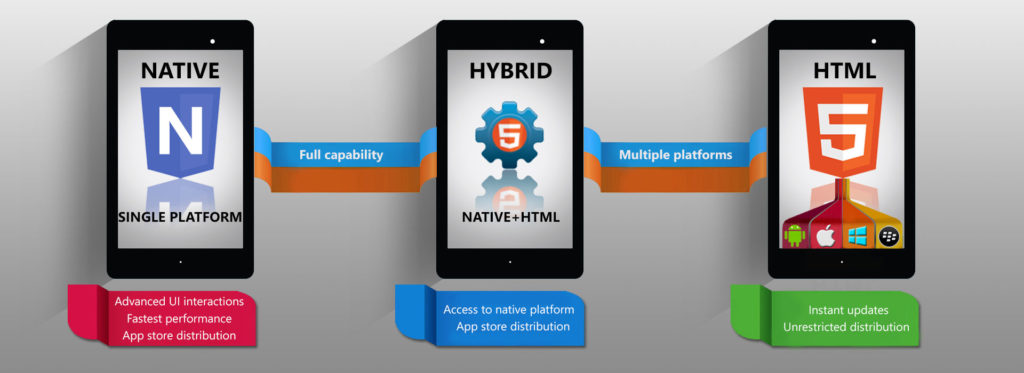Earlier we have made an overview of native and web applications. We found out that the first ones as well as the second ones obtain with certain cons and pros. So that’s why, it should mention about a compromise between those two types of mobile apps, and we will talk about it below.
Hybrid applications represent a composition of web and native applications. Especially, their cross – platform trait and access to smartphone functionality is meant here. Such applications might be downloaded only from “markets” like Google Play and App Store. Meanwhile they obtain with the option of autonomous data update, and for their work Internet connection is required. Without it web functions will not simply work.
Among numerous companies hybrid applications development is most often chosen. It might be explained by the ability of hybrid apps to mix advantages of native technologies with the relevance which web technologies bring. Still, unlike native, the cost of web applications is reasonably lower, and it’s performance is faster. Relation of hybrid applications with native, in its turn, it gives a benefit to make adjustments rapidly and easy.Namely, the developers do not need, as it is with native applications, to place an application in the “store” one more time in order to reduce previous bugs.
The perspective of hybrid application development also looks promising, because it implies its creation for two platforms at once. As a result, it deprives of the headache, related to separate development for each OS. Is it a key factor? For sure.
Besides, it is needed to be taken into consideration, that the quality and abilities of hybrid applications depend, first of all, on the framework, which is used by the developer. Also, we should pay attention to the factors, which make hybrid applications the most preferable option among the rest. So, you should develop it, if:
– you have a need to save your budget.
– you need relatively not so complicated application with simple animation
– you have a task to develop rapidly an application at least for 2 platforms
PROS:
– The cost and speed of development
– Quantity of developers
– Cross – platform character
– Autonomous update
CONS:
– Improper work in case of Internet connection absence
– An average performance speed in comparison with native apps
– Minimalism in regards to visual elements




